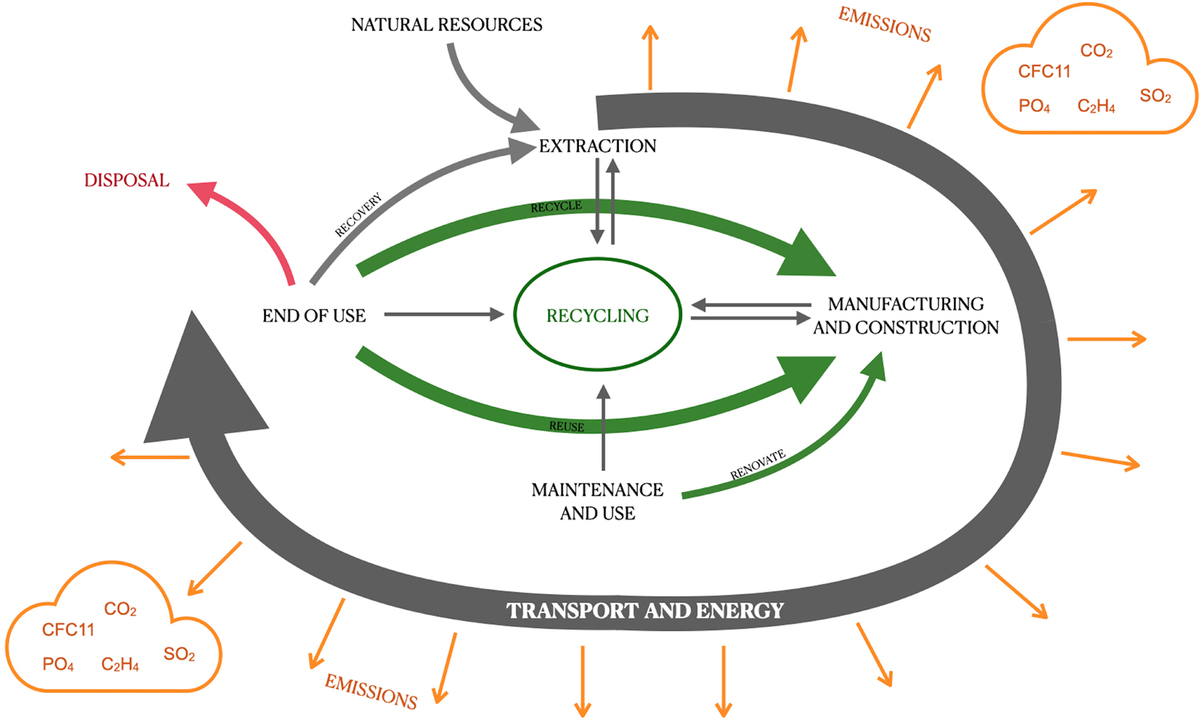Ecological life cycle analysis (LCA) on the example of materials used in warehouse buildings
1
Faculty of Civil Engineering, Chair of Construction Management, Cracow University of Technology, Poland
2
Faculty of Civil Engineering, Doctoral School, Cracow University of Technology, Poland
Submission date: 2023-02-18
Final revision date: 2024-05-23
Acceptance date: 2024-07-09
Publication date: 2025-09-16
Corresponding author
Damian Wieczorek
Faculty of Civil Engineering, Chair of Construction Management, Cracow University of Technology, Warszawska 24, 31-155, Kraków, Poland
Faculty of Civil Engineering, Chair of Construction Management, Cracow University of Technology, Warszawska 24, 31-155, Kraków, Poland
Archives of Civil Engineering 2025;71(3):11-31
KEYWORDS
TOPICS
ABSTRACT
Construction cannot be called as an environment friendly process, hence many solutions are being developed to define the negative interactions of the buildings, determine the extent of environmental impact and find alternatives to improve design performance. The paper examines environment impacts of two warehouses using LCA methodology that has been widely applied in the construction sector, since 1990, taking into consideration life cycle stages from cradle to grave with separate summary for product stage, construction process, use stage and end of life. Phase of the building operational energy use is not discussed in the article. Paper focuses on evaluation of building materials instead of operations of facilities. Analysis takes into account following environment impacts: Global Warming Potential (GWP), Acidification Potential (AP), Eutrophication Potential (EP), Ozone Depletion Potential (ODP), Photochemical Ozone Formation Potential (POFP) and Non-Hazardous Waste Disposed (NHWD). The main conclusion derived from the received results of the warehouse buildings case study is that the product stage is a particularly important phase of the life cycle, as it reveals the highest levels of emissivity impacts among the analyzed stages. The paper indicates materials that are responsible for the greatest impacts.
Share
RELATED ARTICLE
We process personal data collected when visiting the website. The function of obtaining information about users and their behavior is carried out by voluntarily entered information in forms and saving cookies in end devices. Data, including cookies, are used to provide services, improve the user experience and to analyze the traffic in accordance with the Privacy policy. Data are also collected and processed by Google Analytics tool (more).
You can change cookies settings in your browser. Restricted use of cookies in the browser configuration may affect some functionalities of the website.
You can change cookies settings in your browser. Restricted use of cookies in the browser configuration may affect some functionalities of the website.




